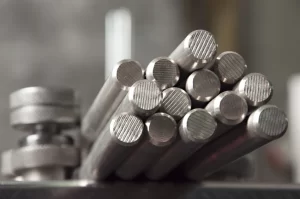Introduction
In the realm of stainless steel alloys, the quest for the perfect balance between strength, durability, and corrosion resistance is a perpetual one. The 410 stainless steel alloy, with its unique composition and properties, raises questions about its ability to stand against the relentless forces of corrosion. This comprehensive article delves deep into the corrosion-resistant nature of 410 stainless steel, examining its chemical composition, environmental factors, applications, and real-world performance.
1. Understanding Corrosion Resistance
 Corrosion resistance is a critical property for materials that endure exposure to harsh environments. Stainless steel, including the 410 variant, is celebrated for its inherent ability to withstand corrosion due to the presence of chromium and other alloying elements.
Corrosion resistance is a critical property for materials that endure exposure to harsh environments. Stainless steel, including the 410 variant, is celebrated for its inherent ability to withstand corrosion due to the presence of chromium and other alloying elements.
2. Chemical Composition of 410 Stainless Steel
The composition of 410 stainless steel includes:
- Chromium (Cr): 11.5% – 13.5%
- Carbon (C): 0.08% – 0.15%
- Manganese (Mn): 1.0% max
- Silicon (Si): 1.0% max
- Phosphorus (P): 0.04% max
- Sulfur (S): 0.03% max
Chromium, in particular, plays a pivotal role in conferring corrosion resistance to this alloy.
3. Corrosion in Different Environments
The corrosion resistance of 410 stainless steel varies based on the environment it encounters:
- Aqueous Environments: In mildly corrosive environments, 410 stainless steel can resist corrosion to a certain extent.
- Chloride-Rich Environments: 410 stainless steel is less resistant to corrosion in chloride-rich environments like seawater.
4. Passive Film Formation
Chromium’s presence prompts the formation of a passive oxide film on the surface of 410 stainless steel. This film acts as a barrier, shielding the alloy from corrosive agents. However, the protective film can be compromised under aggressive conditions.
5. Real-World Applications and Performance
 The corrosion-resistant nature of 410 stainless steel finds applications in:
The corrosion-resistant nature of 410 stainless steel finds applications in:
- Indoor Environments: Cutlery and kitchen utensils benefit from its resistance to mild corrosive agents.
- Automotive: Components like exhaust systems endure varied environmental conditions.
- Medical Instruments: Surgical tools rely on its corrosion resistance in clinical settings.
6. Factors Affecting Corrosion Resistance
Several factors influence the corrosion resistance of 410 stainless steel:
- Surface Finish: Proper finishing processes impact the material’s ability to form and maintain a protective oxide layer.
- Maintenance: Regular cleaning and proper care can enhance the longevity of the passive film.
- Temperature: Elevated temperatures can accelerate corrosion processes, particularly in aggressive environments.
7. Frequently Asked Questions (FAQ)
Q1: Is 410 stainless steel suitable for outdoor applications?
A1: While it can resist corrosion in mild outdoor conditions, 410 stainless steel may not be the best choice for extended exposure to harsh outdoor environments.
Q2: How does 410 stainless steel compare to 304 stainless steel in terms of corrosion resistance?
A2: In general, 304 stainless steel offers better corrosion resistance than 410 stainless steel due to its higher chromium and nickel content.
Q3: Can the corrosion resistance of 410 stainless steel be improved?
A3: While the inherent corrosion resistance is limited, proper surface treatments, such as passivation, can enhance the alloy’s ability to resist corrosion.
Q4: What factors accelerate corrosion in 410 stainless steel?
A4: Exposure to chloride-rich environments, high temperatures, and improper maintenance can accelerate corrosion in 410 stainless steel.
Q5: Are there specific industries where 410 stainless steel’s corrosion resistance shines?
A5: 410 stainless steel’s corrosion resistance is well-suited for indoor applications, cutlery, decorative elements, and certain automotive components.
Conclusion
410 stainless steel’s corrosion resistance is a complex interplay of its chemical composition, passive film formation, and environmental factors. While it possesses a degree of resistance to corrosion, its performance is influenced by various parameters. Understanding the limitations and strengths of 410 stainless steel’s corrosion resistance empowers engineers and designers to make informed decisions, selecting the appropriate material for specific applications where the alloy’s unique attributes can shine.
